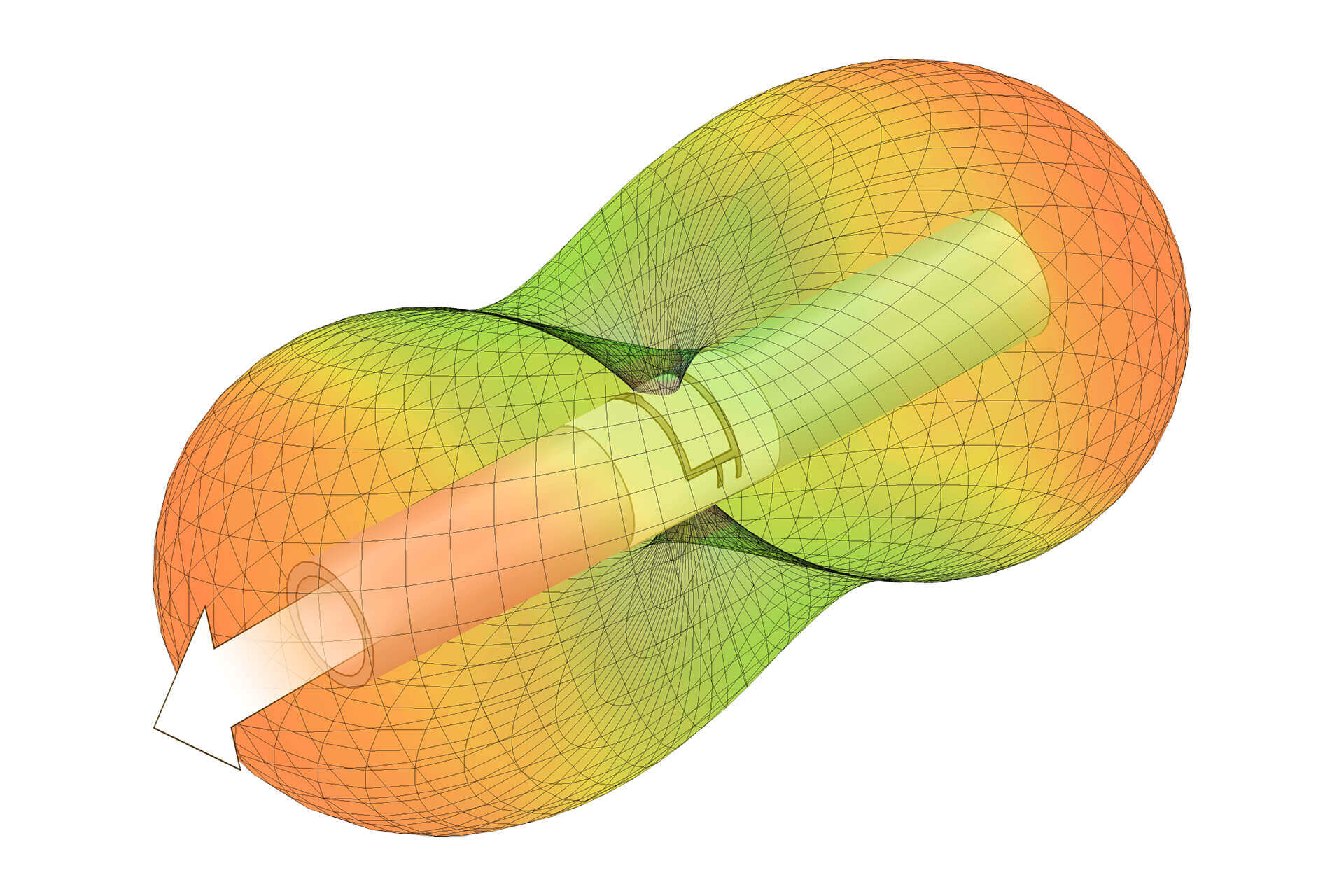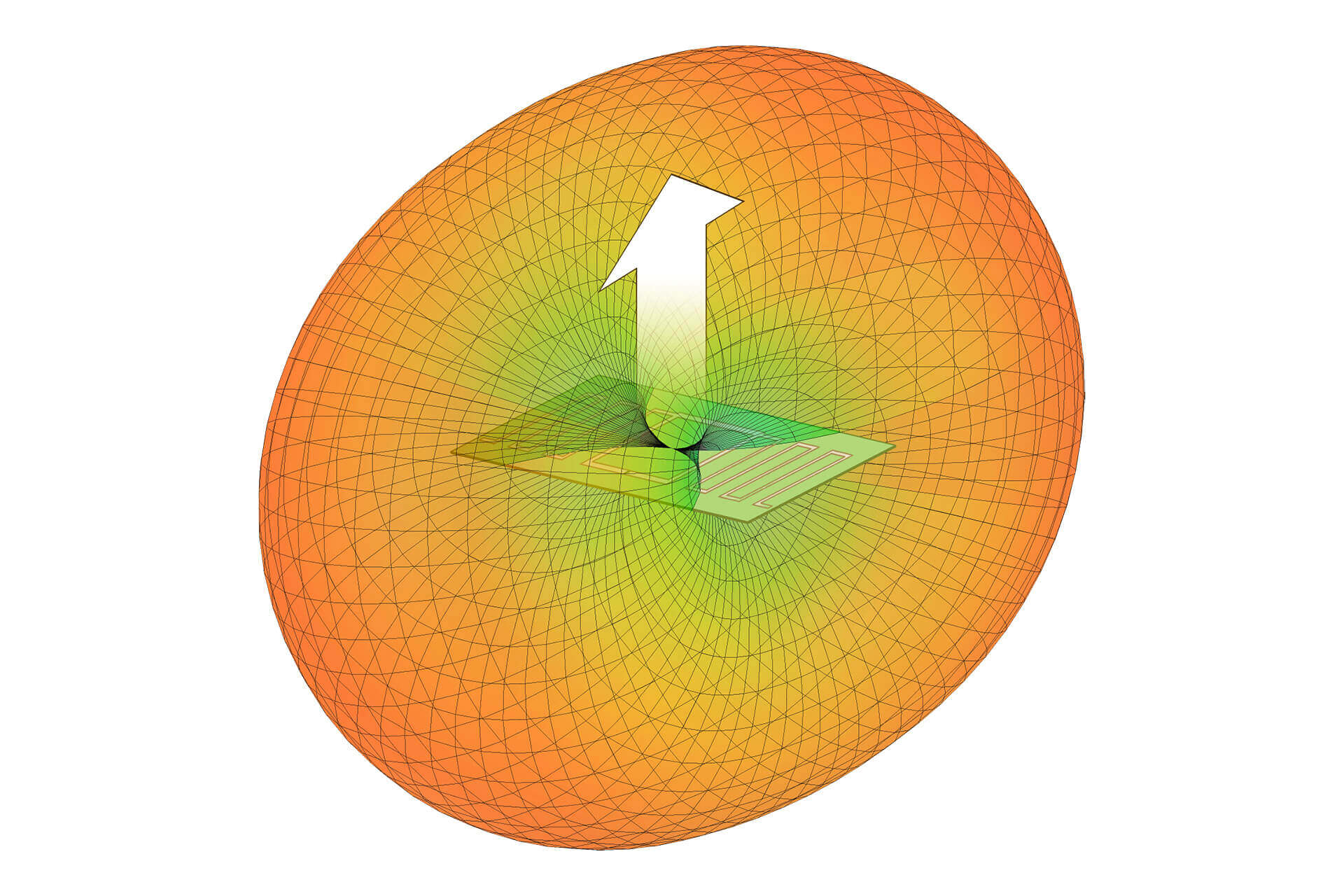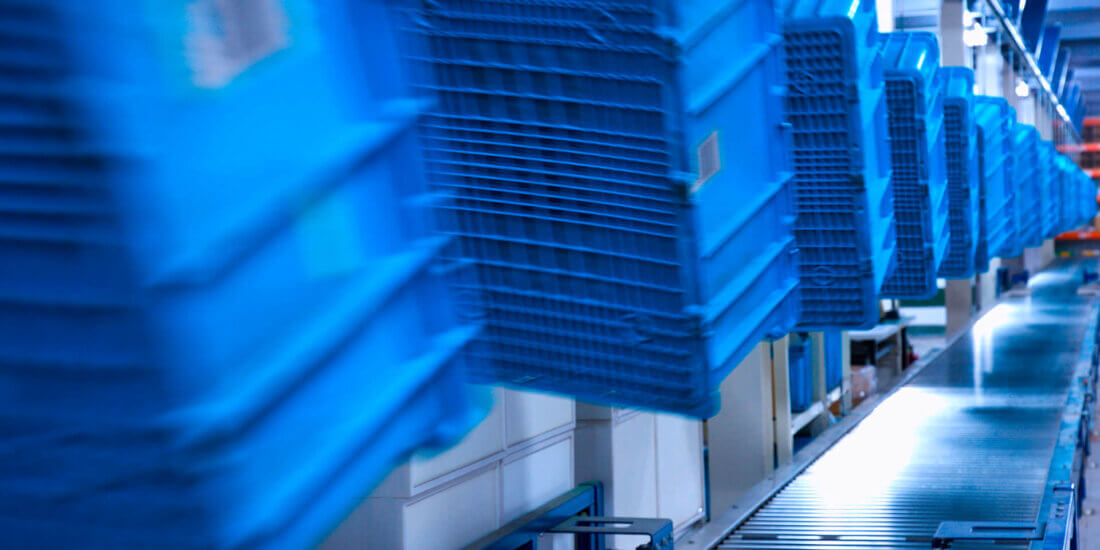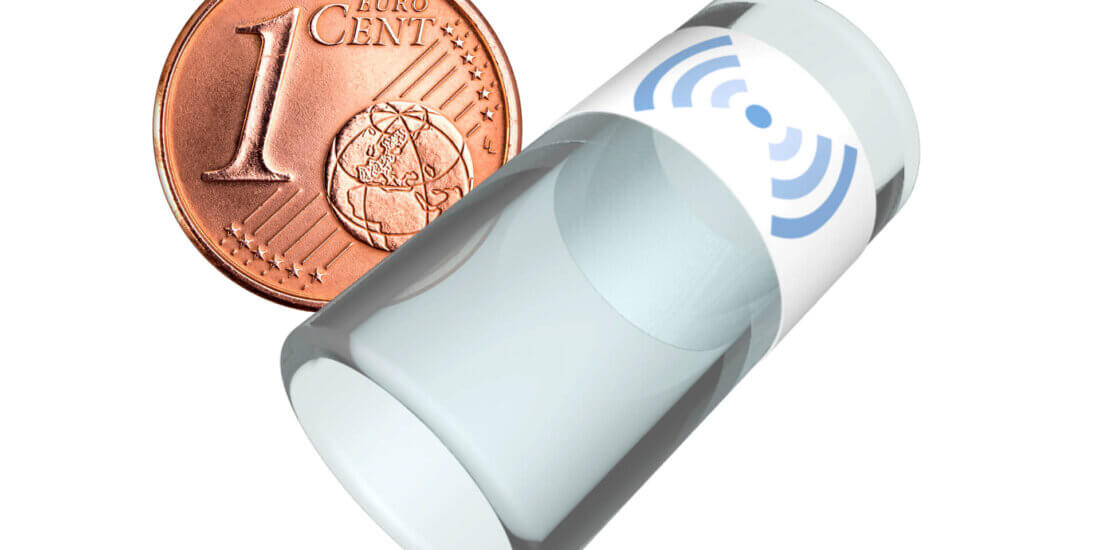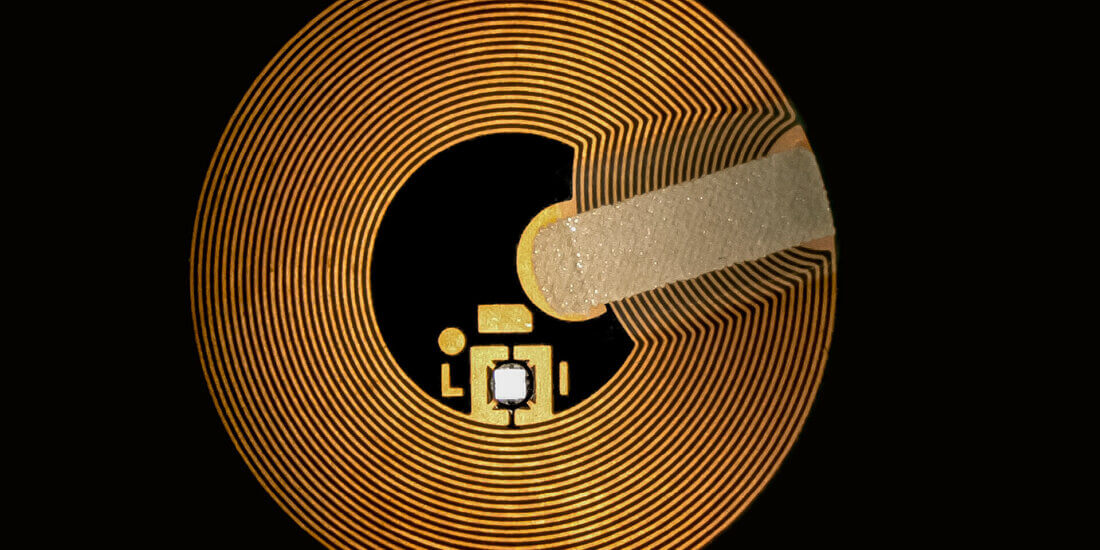Reading Along the Axis Innovative RFID Antenna
SCHREINER LOGIDATA
Reading Along the Axis
Innovative RFID Antenna
Be it tickets for ski lifts, admission control at the office, or contactless payment in supermarkets—RFID has been part of our everyday lives for many years. A look at RFID antennas shows that they have one thing in common: they are flat. However, a special challenge arises when a curved RFID antenna is supposed to be read in axial direction, i.e., along its axis. The Schreiner LogiData competence center has now developed a solution for that purpose.
Schreiner LogiData recently presented an antenna for narrow curvature radii. Such an antenna has a beam direction crosswise to the axis, which is typically desirable. It corresponds to the upright position of the object vis-à-vis the RFID reader. The situation is different when reading should occur in axial direction. That requires an antenna with maximum sensitivity in the axial direction. The experts at Schreiner LogiData have now managed to develop a heavily curved RFID antenna with axial characteristics for integration into labels for small round components. The labels are also suitable for bulk reading.
RFID technology (Radio Frequency Identification) enables contactless and automatic reading of data transmitted to a reader by means of electromagnetic waves. The labels, consisting of an antenna and a chip, are supplied with energy in that way. UHF (Ultra-High Frequency) labels are primarily used in logistics and supply chain applications because they enable long read ranges and bulk reading, i.e., near-simultaneous reading of larger numbers of labels.
The new RFID label for round components developed by the Schreiner LogiData competence center takes advantage of those characteristics as well. What makes this label special is the axial beam in combination with its application to round objects with very small radii. That required the experts from Schreiner LogiData to solve two different problems. On the one hand, the antenna needs to achieve long read range in axial direction despite its small size. On the other hand, antennas cannot normally be curved so heavily without severe functional impairments. The specialists mastered both challenges: by using an all-new approach to antennas, the labels can be read in the direction of the axis, i.e., upward and downward, while offering read ranges of up to 30 centimeters.




